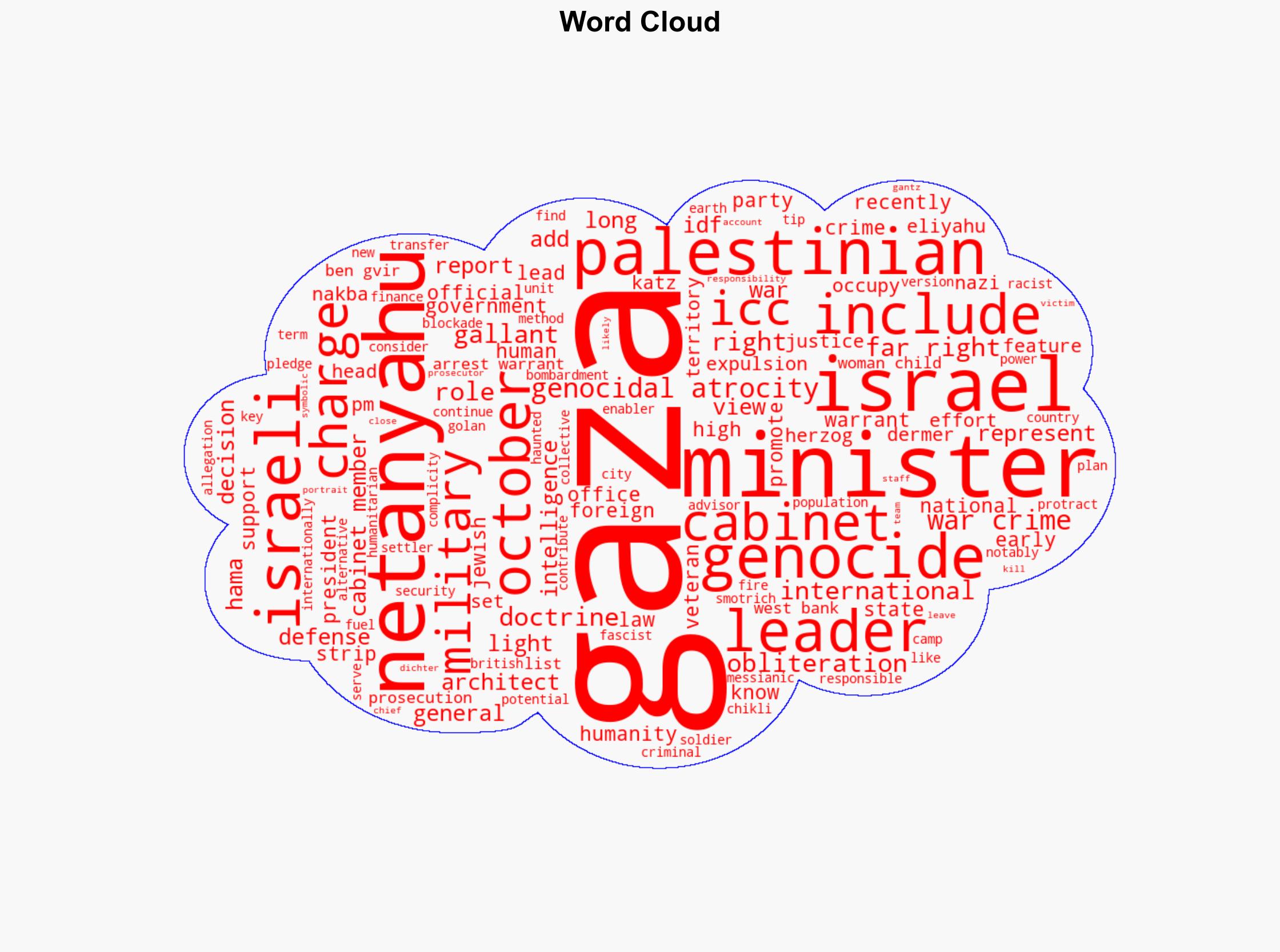Netanyahu Cabinets Complicity in the Gaza Genocide – Antiwar.com
Published on: 2025-11-14
AI-powered OSINT brief from verified open sources. Automated NLP signal extraction with human verification. See our Methodology and Why WorldWideWatchers.
Intelligence Report: Netanyahu Cabinets Complicity in the Gaza Genocide – Antiwar.com
1. BLUF (Bottom Line Up Front)
The strategic judgment is that there is a moderate confidence level that the Netanyahu cabinet’s actions in Gaza could be interpreted as complicity in human rights violations, potentially amounting to genocide. The most supported hypothesis is that the cabinet’s policies and military actions are strategically aimed at weakening Hamas and altering the demographic and political landscape of Gaza, rather than explicitly targeting civilians for extermination. Recommended action includes increased diplomatic pressure and independent investigations to ensure accountability and compliance with international law.
2. Competing Hypotheses
Hypothesis 1: The Netanyahu cabinet is complicit in actions that could be classified as genocide, intentionally targeting civilian populations in Gaza to achieve political and territorial objectives.
Hypothesis 2: The Netanyahu cabinet’s actions are primarily aimed at neutralizing Hamas and other militant threats, with civilian casualties being an unintended consequence of military operations in a densely populated area.
Hypothesis 2 is more likely given the historical context of Israeli military operations focusing on counter-terrorism and security objectives. However, the scale and nature of the operations raise significant concerns about proportionality and adherence to international humanitarian law.
3. Key Assumptions and Red Flags
Assumptions include the belief that Israeli military actions are primarily defensive and security-oriented. Red flags include the potential bias of sources, the timing of the report’s release, and the political motivations behind the accusations. Deception indicators could involve the manipulation of casualty figures or the portrayal of military targets as civilian.
4. Implications and Strategic Risks
The continuation of these policies could lead to increased international condemnation, potential sanctions, and further isolation of Israel. There is a risk of escalating violence and retaliatory actions from Palestinian groups, which could destabilize the region further. Cyber and informational warfare could be employed by both sides to sway international opinion.
5. Recommendations and Outlook
- Encourage independent investigations by international bodies to assess the situation on the ground and ensure accountability.
- Facilitate dialogue between Israeli and Palestinian representatives to de-escalate tensions and explore peaceful resolutions.
- Best-case scenario: A ceasefire is brokered, and humanitarian aid is allowed into Gaza, reducing civilian suffering.
- Worst-case scenario: Escalation into a broader regional conflict involving neighboring countries and non-state actors.
- Most-likely scenario: Continued military operations with intermittent international diplomatic interventions.
6. Key Individuals and Entities
Benjamin Netanyahu, Yoav Gallant, Itamar Ben Gvir, Bezalel Smotrich, Israel Katz, Amihai Eliyahu, Orit Strook, Galit Distel Atbaryan.
7. Thematic Tags
Counter-Terrorism, Human Rights, Middle East Conflict, International Law, Geopolitical Stability
Structured Analytic Techniques Applied
- ACH 2.0: Reconstruct likely threat actor intentions via hypothesis testing and structured refutation.
- Indicators Development: Track radicalization signals and propaganda patterns to anticipate operational planning.
- Narrative Pattern Analysis: Analyze spread/adaptation of ideological narratives for recruitment/incitement signals.
- Network Influence Mapping: Map influence relationships to assess actor impact.
Explore more:
Counter-Terrorism Briefs ·
Daily Summary ·
Methodology





